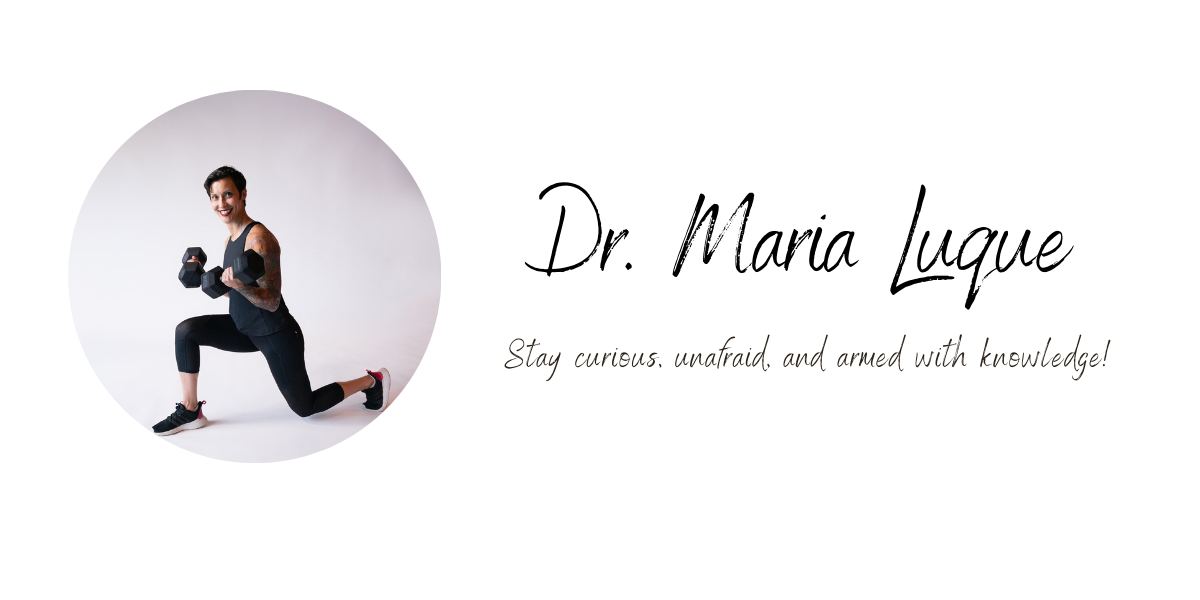4 Of The Biggest Osteoporosis Myths Busted
Feb 23, 2021
I’m dedicating this month to sharing tips on ways to keep your bones strong and avoid osteoporosis. There’s so much confusion and misinformation out there! If you believe that the only way to ward off osteoporosis (and major fractures) is to take a magic pill, I have good news for you. There are many ways to keep your bones strong without resorting to pills or supplements. Research indicates that consuming calcium and vitamin D, two of the most important nutrients for bone health, through food sources is more effective than taking a supplement.
I’ll start by busting the four biggest osteoporosis myths. This is going to be fun.
(1) All types of exercise are good for osteoporosis prevention.
I’m not about to discourage you from moving your body, but when it comes to bone health, a combination of resistance training and high-impact activities is most effective.
Resistance training is highly effective for increasing muscle mass and strength, both of which make you less likely to fall. High-impact activities such as hopping, skipping and jumping can increase bone mineral density (BMD), as well as muscle strength and power because they exert a gravitational force on the skeleton.
For some quick tips on how to start your osteoporosis-prevention routine click here.
(2) Once I’m diagnosed with osteopenia, I’m doomed.
While the terms osteoporosis and osteopenia are often used interchangeably, they are not the same thing. Osteopenia is the precursor to osteoporosis--an indication that you might have low bone mass, but that it’s not yet at a level of great concern. There’s nothing inevitable about a diagnosis of osteopenia--you may have heard that everyone with osteopenia goes on to develop osteoporosis. This isn’t the case, but it should be a wake-up call. If you have osteopenia, you’re getting a very clear message: it’s time for preventative measures, such as physical activity.
(3) My mom had osteoporosis so I’ll probably get it too.
Yes, a family history of osteoporosis puts you in a higher risk category. But there’s more to it than genetics. Such factors as lifestyle--how you approach physical activity, smoking, alcohol, and nutrition--also play into the overall equation. The FRAX Risk Assessment tool is a terrific resource to determine if you should be screened. Finally, no matter how high your risk turns out to be, you can still take action against bone loss.
(4) I drink a lot of milk and get plenty of calcium so I don’t need to worry about osteoporosis.
Good nutrition is indeed crucial to strong bones, but, as I just explained, the right type of exercise is a must. To those who worry they’re not getting enough calcium and despair of untangling all the nutritional recommendations, don’t do that! There are plenty of easy ways to include bone-healthy foods in your daily diet. Here’s a cheat sheet:
Nutrition Guidelines for Bone Health
Calcium: not to exceed 2,500 mg/day
- 19-50 years: 1,000 mg/day
- 50 plus: 1,200 mg/day
Vitamin D: not to exceed 2,000 IU/day
- 51-69: 400 IU/day
- 70 +: 600 IU/day
Protein: 1-1.2 g/kg of bodyweight
Calcium and Vitamin D content in Common Foods
|
Food |
Calcium (mg) |
Vitamin D (IU) |
|
Milk (1 cup) |
295 |
98 |
|
Yogurt (1 cup) fortified with Vitamin D |
415 |
58-71 |
|
Salmon and Mackerel (3 oz) |
205 |
200-300 |
|
Canned Tuna (3 oz) |
10 |
136 |
|
Sardines (3 oz) |
270 |
150 |
|
Broccoli raw 1 cup |
90 |
|
|
Swiss Cheese 1 oz |
270 |
|
|
Egg yolk 1 |
|
25 |
|
Cod liver oil (5ml) |
|
400 |
|
Shiitake mushroom dried 3.5 oz |
|
1600 |



